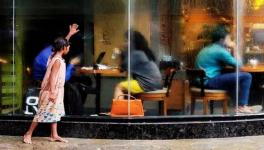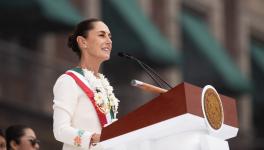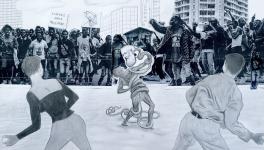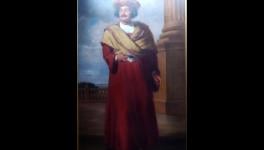Greenlandic Inuit Women Empowering Indigenous Identity Through Art
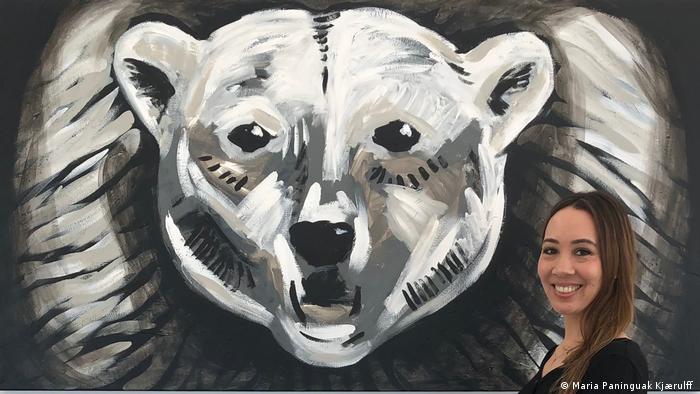
'It is essential for Inuit artists to make art as it includes our perspectives,' says artist Maria Paninguak Kjærulff.
Craftswoman Sara Marie L Berthelsen, from the Greenlandic capital, Nuuk, specializes in making and embroidering traditional sealskin kamik boots –– a crucial part of Greenlandic national dress. Inuit families in Greenland have passed on their unique costume designs from generation to generation. Berthelsen told DW that she inherited her crafts skills from her grandmother.
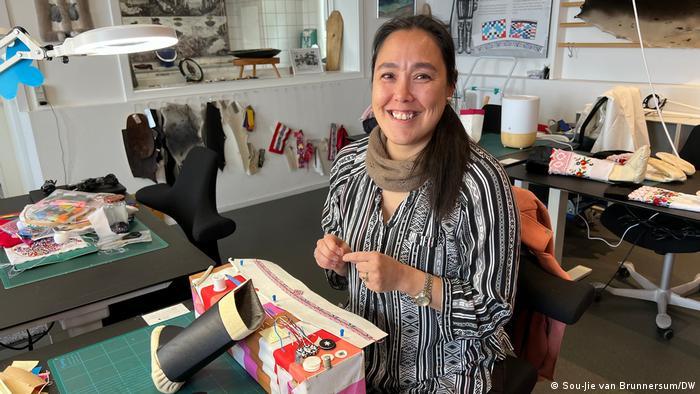
Sara Marie L Berthelsen specializes in making and embroidering kamik — long boots made of sealskin with other animal skins sewn on.
"For me, it's very important to keep the traditional way of making kamik," Berthelsen said, adding that the survival of the Inuit people has been dependent on women. Having excellent crafts skills and making good quality kamik ensured waterproof footwear for hunting in the snow, as well as prevented kayaks made from sealskins from sinking.
Today, the Greenlandic national costume is reserved for special occasions, including weddings and graduations. Berthelsen, however, has bigger aspirations for the traditional wear.
"My dream is that children in Greenland will return to wearing kamiks in their everyday life," she said.
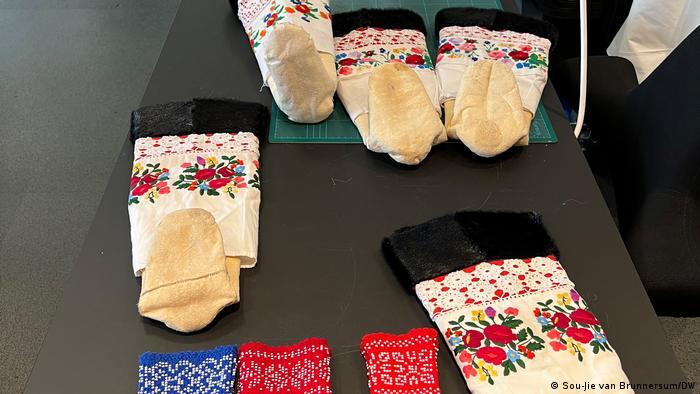
Greenlandic Inuit people traditionally wore kamik made from animal hides, with European fabrics and glass beads added later.
The artisan has been busy at work. Greenland is seeing growing demands for the traditional costume, particularly among the country's youth, who are increasingly expressing political desires for national independence.
"Young people are beginning to feel prouder of being Greenlandic. Many want to put the colonial ties behind us and so are embracing the costumes," Berthelsen said.
A long colonial history
Greenland was a Danish colony until 1953 and is now a semiautonomous territory in the Kingdom of Denmark with limited self-government.
The Arctic nation's colonial past began with the Danish-Norwegian priest Hans Egede, who arrived in 1721 to set up missions. In 1953, Denmark unilaterally changed the status of Greenland to a constituency in its kingdom.
Starting in 1979, Greenland gained more autonomy and its own parliament. Yet many Greenlanders, citing ongoing dominance and control exercised by Danish authorities and figures in all spheres of Greenlandic life, continue to fight for national independence.
Such tensions also play out in the arts. During Danish colonial rule, Inuit culture was systematically repressed, weakening transmission between generations, with effects that are still palpable today. For instance, the Inuit practice of tattooing, which missionaries attempted to eradicate, is only beginning to re-establish itself more broadly.
Painting a magical universe
Maria Paninguak Kjærulff, a visual artist, writer and illustrator from Nuuk, told DW that she sees art as "a way to express cultural identity and leave a personal fingerprint." Her latest project, a children's book, aims to honor and celebrate Inuit culture and traditions.
The story is about a Greenlandic girl who embarks on an adventure to discover her values and skills, meeting interesting friends along the way. The book addresses universal themes such as being true to oneself.
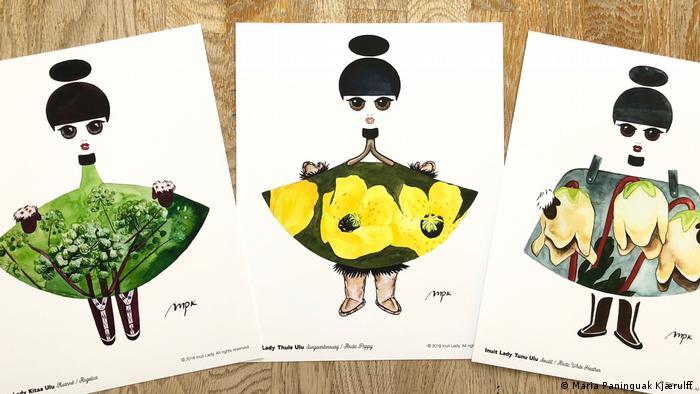
Maria Paninguak Kjærulff's depiction of Greenlandic women wearing sealskin boots
"It's import for me that the children here in Greenland have a universe they can relate to, with a Greenlandic girl in it, written by a local Greenlander," Paninguak Kjærulff said. "It's essential for Inuit artists to make art as it includes our perspectives, and representation matters."
The story is set within a "cozy and ordinary" Greenlandic home but contains magical Inuit cultural and traditional elements.
"It was a revelation to me when I started that I have a voice. I can decide everything in the universe I create, and I hope to create an inviting, warm universe," she said.
Tradition with a modern twist
Sascha Blidorf is a jewelry designer from Qaqortoq, southern Greenland. She adds a modern twist to her beadwork to reflect the continuous evolution of Greenlandic jewelry.
"I am inspired by the colors of nature in Greenland. It's a mix of modern and traditional style," she told DW.
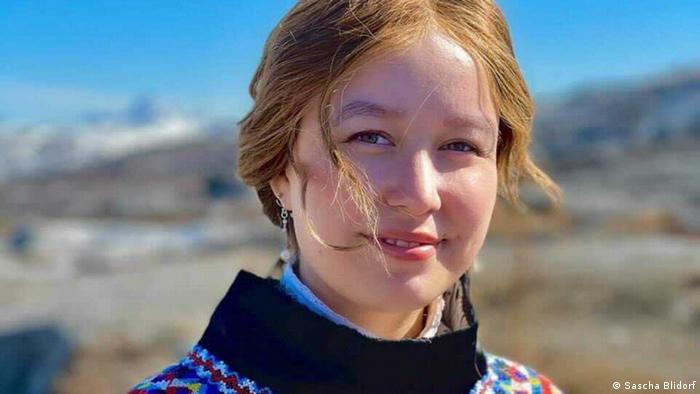
Jewelry designer Sascha Blidorf says that, without beaded jewelry, Greenland's national dress would be "missing something" important.
"My art means that I can show my Indigenous identity in a more modern way that fits this modern world, without forgetting my culture and where I come from … for me it's extremely important to show our art and to keep making it," she said.
The artisan sells her products worldwide using social media platforms such as Instagram. Her pieces can be worn as part of the national costume or as part of everyday wear.
"Making beaded jewelry is a part of our history," Blidorf says. The fur and skin used in Greenlandic jewelry and clothing are typically from hunted animals. "It's not like we kill animals to make jewelry, but to eat. In our culture, we respect nature and animals so when we kill animals we use every part of it," she explained.
Arts and crafts "mean something to us and strengthen Inuit Greenlandic culture," Blidorf says, adding that she feels "complete" when wearing her jewelry.
"The Indigenous Inuit were told to 'forget' their culture because of colonialism. But through art and craft, we can never forget where we are from and who we are."
'Inuit art is blooming'
There is no historical tradition of making ceramics in Greenland. But potter Nuuna Papis Chemnitz is hoping to change that. The artisan started pottery as a hobby, then shortly afterwards opened an atelier in Nuuk.
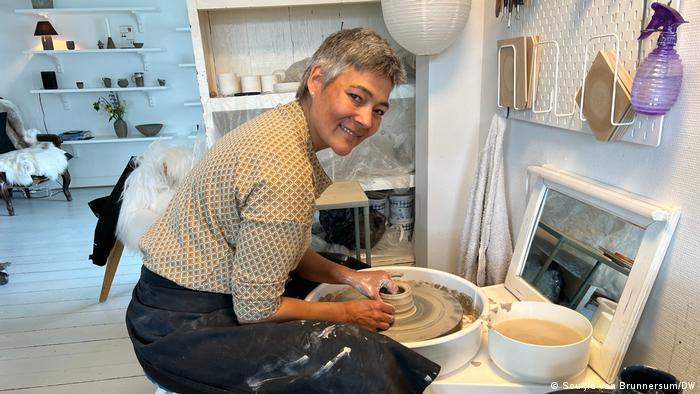
Ceramic artist Nuuna Papis Chemnitz says her work represents 'one people, one planet'.
"I love to create pottery to show our Inuit culture and art in a different way that hasn't been shown before," Papis Chemnitz told DW. "I think it's important for me and other Inuit that we show something that we had put behind us in order to get westernized. I love that I can combine the western material with pottery and Inuit art," she says.
Traditionally, Inuit Greenlanders used soapstone or walrus ivory to create art, the artisan explains. Kitchenware was mostly made from driftwood from Canada or from stone. Cutlery wasn't introduced until much later.
"My mother didn't use a knife and fork until she was seven. Before that, she used the ulu [traditional women's knife]," she said.
The ceramic artist paints or incises Inuit-inspired motifs like the qulliq (lamp) into her works. The qulliq symbolizes family, gatherings and warmth — or the harpoon to attract a successful hunt.
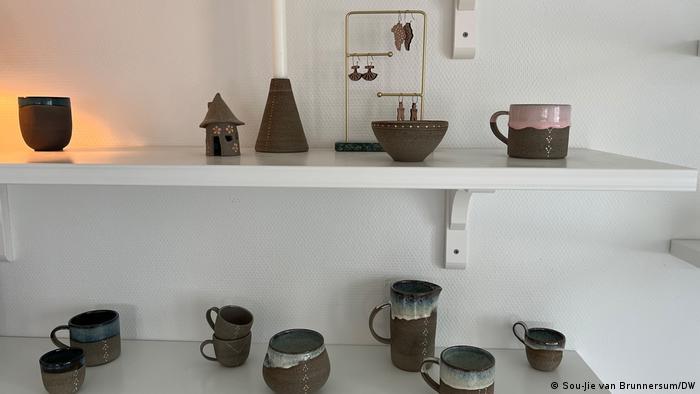
Artist Nuuna Papis Chemnitz loves adding Greenlandic sand to her wares
Papis Chemnitz also uses earth and mud from glacier flow to make special Inuit tattoo-inspired dots on her work. "Inuit symbols are unique. The Inuit dots give you good thoughts and help you remember something special, like your grandparents, ancestors or wedding," she says.
The potter is confident Inuit art is gaining a foothold in an ever-connected world.
"The world has become smaller; we now see our connection with other Inuits [in Canada and Alaska], and it's strengthening our art," she said. "Inuit art has been hidden away for many years, but now it's just blooming."
Children's book artist Paninguak Kjærulff agrees: "There's so much potential for us Inuit Greenlanders to tell our own stories; I really we hope we can take even more pride and ownership of what we have to offer."
Edited by: Louisa Schaefer and Cristina Burack
Get the latest reports & analysis with people's perspective on Protests, movements & deep analytical videos, discussions of the current affairs in your Telegram app. Subscribe to NewsClick's Telegram channel & get Real-Time updates on stories, as they get published on our website.













